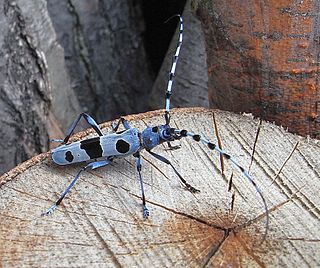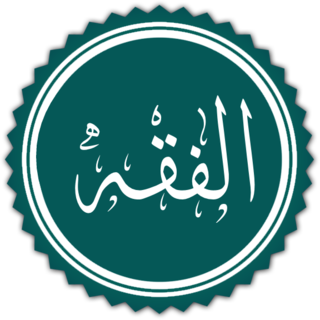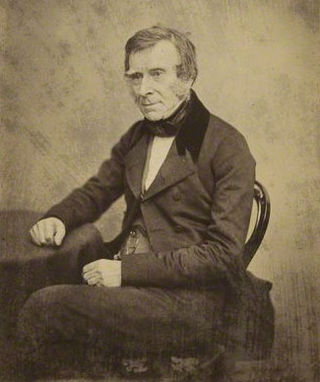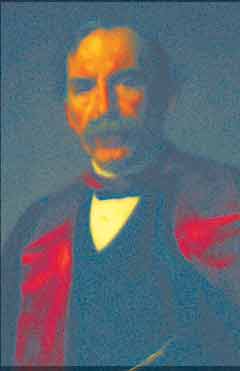Related Research Articles

Arthritis is a term often used to mean any disorder that affects joints. Symptoms generally include joint pain and stiffness. Other symptoms may include redness, warmth, swelling, and decreased range of motion of the affected joints. In some types of arthritis, other organs are also affected. Onset can be gradual or sudden.

Amputation is the removal of a limb by trauma, medical illness, or surgery. As a surgical measure, it is used to control pain or a disease process in the affected limb, such as malignancy or gangrene. In some cases, it is carried out on individuals as a preventive surgery for such problems. A special case is that of congenital amputation, a congenital disorder, where fetal limbs have been cut off by constrictive bands. In some countries, judicial amputation is currently used to punish people who commit crimes. Amputation has also been used as a tactic in war and acts of terrorism; it may also occur as a war injury. In some cultures and religions, minor amputations or mutilations are considered a ritual accomplishment. When done by a person, the person executing the amputation is an amputator. The oldest evidence of this practice comes from a skeleton found buried in Liang Tebo cave, East Kalimantan, Indonesian Borneo dating back to at least 31,000 years ago, where it was done when the amputee was a young child.

A finger is a prominent digit on the forelimbs of most tetrapod vertebrate animals, especially those with prehensile extremities such as humans and other primates. Most tetrapods have five digits (pentadactyly), and short digits are typically referred to as toes, while those that are notably elongated are called fingers. In humans, the fingers are flexibly articulated and opposable, serving as an important organ of tactile sensation and fine movements, which are crucial to the dexterity of the hands and the ability to grasp and manipulate objects.
In medicine, a prosthesis, or a prosthetic implant, is an artificial device that replaces a missing body part, which may be lost through physical trauma, disease, or a condition present at birth. Prostheses are intended to restore the normal functions of the missing body part. A person who has undergone an amputation is sometimes referred to as an amputee, however, this term may be offensive. Rehabilitation for someone with an amputation is primarily coordinated by a physiatrist as part of an inter-disciplinary team consisting of physiatrists, prosthetists, nurses, physical therapists, and occupational therapists. Prostheses can be created by hand or with computer-aided design (CAD), a software interface that helps creators design and analyze the creation with computer-generated 2-D and 3-D graphics as well as analysis and optimization tools.

Antennae, sometimes referred to as "feelers", are paired appendages used for sensing in arthropods.

Gangrene is a type of tissue death caused by a lack of blood supply. Symptoms may include a change in skin color to red or black, numbness, swelling, pain, skin breakdown, and coolness. The feet and hands are most commonly affected. If the gangrene is caused by an infectious agent, it may present with a fever or sepsis.

Osteomyelitis (OM) is an infection of bone. Symptoms may include pain in a specific bone with overlying redness, fever, and weakness. The feet, spine, and hips are the most commonly involved bones in adults.

Thromboangiitis obliterans, also known as Buerger disease or Winiwarter-Buerger disease, is a recurring progressive inflammation and thrombosis (clotting) of small and medium arteries and veins of the hands and feet. It is strongly associated with use of tobacco products, primarily from smoking, but is also associated with smokeless tobacco.

A peg leg is a prosthesis, or artificial limb, fitted to the remaining stump of a human leg, especially a wooden one fitted at the knee. Its use dates to antiquity.

Sir Joseph Fayrer, 1st Baronet KCSI FRS FRSE FRCS FRCP LLD was a British physician who served as Surgeon General in India. He is noted for his writings on medicine, work on public health and his studies particularly on the treatment of snakebite, in India. He was also involved in official investigation on cholera, in which he did not accept the idea, proposed by Robert Koch, of germs as the cause of cholera.

Hudud is an Arabic word meaning "borders, boundaries, limits". In classical Islamic literature, punishments are mainly of three types; Qisas-diya, hudud and Ta'zeer. Hudud covers the punishments given to people who exceed the limits associated with the Quran and set by Allah, and in this respect it differs from Ta'zeer. These punishments were applied in pre-modern Islam, and their use in some modern states has been a source of controversy.

Sir Benjamin Collins Brodie, 1st Baronet, was an English physiologist and surgeon who pioneered research into bone and joint disease.

Crush syndrome is a medical condition characterized by major shock and kidney failure after a crushing injury to skeletal muscle. Crush injury is compression of the arms, legs, or other parts of the body that causes muscle swelling and/or neurological disturbances in the affected areas of the body, while crush syndrome is a localized crush injury with systemic manifestations. Cases occur commonly in catastrophes such as earthquakes, to individuals that have been trapped under fallen or moving masonry.
A sensory nerve, or afferent nerve, is an anatomic term for a nerve that contains exclusively afferent nerve fibers. Nerves containing also motor fibers are called mixed. Afferent nerve fibers in a sensory nerve carry sensory information toward the central nervous system (CNS) from different sensory receptors of sensory neurons in the peripheral nervous system.

The Nuffield Orthopaedic Centre (NOC) is an orthopaedic hospital, with strong affiliations to the University of Oxford. It provides routine and specialist orthopaedic surgery, plastic surgery and rheumatology services to the people of Oxfordshire. Specialist services, such as the treatment of osteomyelitis and bone tumours, and the rehabilitation of those with limb amputation, congenital deficiency and neurological disabilities, are provided for patients from across the UK and abroad. It is managed by the Oxford University Hospitals NHS Foundation Trust.

The state of medical knowledge at the time of the Civil War was quite limited by 21st century standards. Doctors did not understand germs, and did little to prevent infection. It was a time before antiseptics, and a time when there was no attempt to maintain sterility during surgery. No antibiotics were available, and minor wounds could easily become infected, and hence fatal. While the typical soldier was at risk of being hit by rifle or artillery fire, he faced an even greater risk of dying from disease.

T46 and F46 are disability sport classification for disability athletics. People in this class have a single below or above the elbow amputation. The amputee sports equivalent class is ISOD the A6 and A8 classes. People in this class can have injuries as a result of over use of their remaining upper limb. The classification process to be included in this class has four parts: a medical exam, observation during training, observation during competition and then being classified into this class.
The treatment of broken bones and dislocated joints can be traced as far back as the Ancient Greeks. Hippocrates is credited with a method of reduction of a dislocated shoulder. 16th century Spanish texts talk about the Aztecs use of reduction of fractures using fir branches. The modern discipline of orthopaedics in trauma care developed during the course of World War I, but it was not until after World War II that orthopaedics became the dominant field treating fractures in much of the world. Today, the discipline encompasses conditions such as bone fractures and bone loss, as well as spinal pathology and joint disease.
Amputee sports classification is a disability specific sport classification used for disability sports to facilitate fair competition among people with different types of amputations. This classification was set up by International Sports Organization for the Disabled (ISOD), and is currently managed by IWAS who ISOD merged with in 2005. Several sports have sport specific governing bodies managing classification for amputee sportspeople.

Sir Thomas Frederick Chavasse, was an English surgeon, who learned the practice of antiseptic surgery from Joseph Lister in Edinburgh and remained an exponent of this technique throughout his career. As a surgeon at the Birmingham General Hospital he was influential in the design of the new hospital in 1897 and was an active fundraiser for the project. An active supporter of the British Red Cross Society and the St John's Ambulance Brigade, he was knighted in 1905.
References
- ↑ Martin, Elizabeth A., ed. (2003-07-24) [6th edition 2002]. Oxford Concise Medical Dictionary. Oxford Paperback Reference (6th (Reissued with corrections) ed.). Oxford: Oxford University Press. p. 199. ISBN 0-19-860753-9.